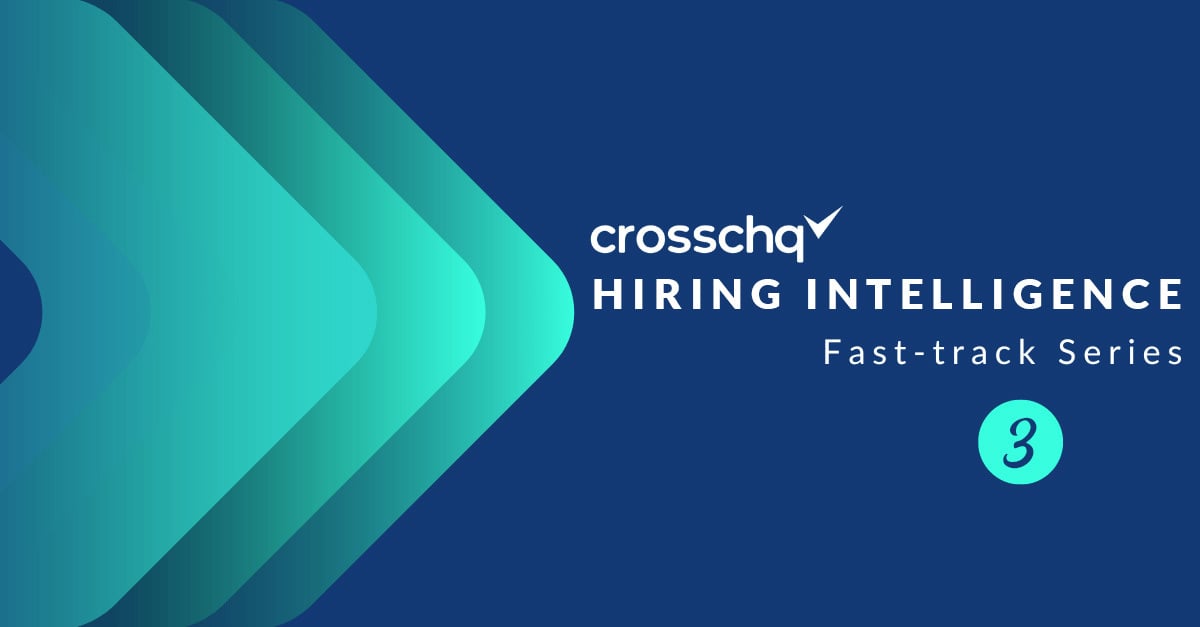

Crosschq Blog
How-to Guide for Better Talent Analytics

Welcome to Week 3 in our Hiring Intelligence Fast-Track Blog Series
The #1 challenge for recruiting teams remains to find highly-qualified, diverse talent and fill seats quickly. And to do so successfully requires making smart, data-backed decisions, fast.
Only 1 in 5 HR leaders believe their organization
is effective at using data to drive talent decisions.
In other words, many people are stuck on the left side of the Hiring Intelligence Maturity Curve. Why? Data is often scattered and siloed across various systems making it nearly impossible to draw actionable insights.
HR leaders know they need to invest time and attention in fixing this gap, but where to start… and when is there time?
As the saying goes, you can't manage what you don't measure. Tracking and measuring activities is one of the most important things you can do to improve your hiring efforts.
Here are the 6 Key Talent Analytics Metrics top talent teams should be measuring:
- Time to Fill & Time to Hire: Time to Fill is the time period between job req approval and the candidate hire date. Time to Hire is a subset of that, tracking the time period between when the candidate enters the pipeline and when a job offer is accepted. Benchmarking can vary by organization. Time to Fill can be as short as 20 days, but for some companies, it is double that.
- Source of Hire: What percentage of hires entered the pipeline from each source? Start here, but then take the next step: look past which source brings the highest *quantity* of hires, and work to calculate which source delivers the best *quality* or top-performance hires.
- First-Year Attrition: This is the percentage of employees who are terminated or self-terminated in the first 12 months. After setting this benchmark, improve attrition rates by gathering data on why employees leave or tie sources, job descriptions, or onboarding processes to increase termination.
- Quality of Hire: This is the value a new hire brings to the organization adjusted over time. This metric allows you to build a profile of what a high-performance employee looks like for your organization.
- Recruitment Pipeline Pass-Through Rate: This metric tracks how many candidates successfully move from one stage to the next. Tracking these conversion rates over time can help uncover drop-off points in your pipeline funnel, providing insights as to what stages could use some improvements.
- Cost Per Hire: This is the calculated cost of recruiting a candidate (including indirect costs incurred during the Time to Fill period.) According to SHRM, the average cost per hire is nearly $4,700. Where do you stack up?
In our next post in this Hiring Intelligence Fast-Track Series, we dive deep into Quality of Hire and reveal some surprising findings uncovered from analyzing 24M+ hiring decisions.
Additional Resource:
Hiring Intelligence Fast-Track Series: Everything You Need to Up-Level Your Hiring
1. Do you have the right data to win the hiring battle?
2. The Hiring Intelligence Maturity Model – Where do you sit?
3. How-to Guide for Better Talent Analytics (this article)
4. Unlocking a New Super Power: Predicting Quality of Hire
5. Empowering You: Getting a Seat at the Table
6. From Operational to Transformational in 4 Easy Steps
Take the Guesswork
Out of Hiring
Schedule a demo now



%20-200x43.png)






.png)